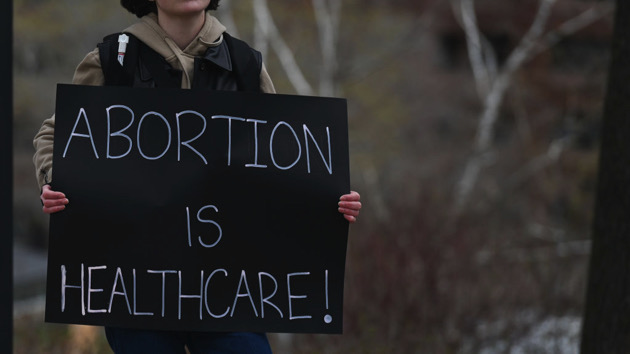
(NEW YORK) — A new study is offering new clues in solving the medical mystery of Sudden Infant Death Syndrome (SIDS), which causes over 1,000 infant deaths per year in the United States, according to the Centers for Disease Control and Prevention (CDC).
The study, led by researchers in Australia and published this week in the medical journal eBioMedicine, found that babies who died due to SIDS had lower levels of an enzyme known as Butyrylcholinesterase (BChE).
The previously unidentified enzyme is thought to be involved in the brain pathways that drive a person to take a breath, according to ABC News chief medical correspondent Dr. Jennifer Ashton, a board-certified OBGYN.
“Potentially, this would represent a target for intervention,” Ashton said Friday on ABC’s Good Morning America. “If you could screen babies and found they had a low enzyme level, potentially you could improve that.”
Currently, there is no method to know an infant’s risk for SIDS, which is defined as the unexplained death of a baby younger than the age of 1. In most cases, a SIDS death occurs while a baby is sleeping.
Because of the risk of SIDS, medical experts, including the American Academy of Pediatrics (AAP), recommend that parent and caregivers place infants to sleep on their back, practice room-sharing without bed-sharing, avoid any soft objects or bedding in a baby’s sleep area and use only firm sleep surfaces such as a crib, bassinet or pack-and-play.
The AAP offers these additional sleep safety recommendations for babies:
1. Until their first birthday, babies should sleep on their backs for all sleep times — for naps and at night.
“We know babies who sleep on their backs are much less likely to die of SIDS than babies who sleep on their stomachs or sides. The problem with the side position is that the baby can roll more easily onto the stomach. Some parents worry that babies will choke when on their backs, but the baby’s airway anatomy and the gag reflex will keep that from happening. Even babies with gastroesophageal reflux (GERD) should sleep on their backs.”
2. Use a firm sleep surface.
“A crib, bassinet, portable crib, or play yard that meets the safety standards of the Consumer Product Safety Commission (CPSC) is recommended along with a tight-fitting, firm mattress and fitted sheet designed for that particular product. Nothing else should be in the crib except for the baby. A firm surface is a hard surface; it should not indent when the baby is lying on it. Bedside sleepers that meet CPSC safety standards may be an option, but there are no published studies that have examined the safety of these products. In addition, some crib mattresses and sleep surfaces are advertised to reduce the risk of SIDS. There is no evidence that this is true, but parents can use these products if they meet CPSC safety standards.”
3. Keep baby’s sleep area in the same room where you sleep for the first 6 months or, ideally, for the first year.
“Place your baby’s crib, bassinet, portable crib, or play yard in your bedroom, close to your bed. The AAP recommends room sharing because it can decrease the risk of SIDS by as much as 50% and is much safer than bed sharing. In addition, room sharing will make it easier for you to feed, comfort, and watch your baby.”
4. Only bring your baby into your bed to feed or comfort.
“Place your baby back in his or her own sleep space when you are ready to go to sleep. If there is any possibility that you might fall asleep, make sure there are no pillows, sheets, blankets, or any other items that could cover your baby’s face, head, and neck, or overheat your baby. As soon as you wake up, be sure to move the baby to his or her own bed … Bed-sharing is not recommended for any babies.”
5. Never place your baby to sleep on a couch, sofa, or armchair.
“This is an extremely dangerous place for your baby to sleep.”
6. Keep soft objects, loose bedding and other items out of the baby’s sleep area.
“These include pillows, quilts, comforters, sheepskins, blankets, toys, bumper pads or similar products that attach to crib slats or sides. If you are worried about your baby getting cold, you can use infant sleep clothing, such as a wearable blanket. In general, your baby should be dressed with only one layer more than you are wearing.”
7. Swaddle your baby safely.
“However, make sure that the baby is always on his or her back when swaddled. The swaddle should not be too tight or make it hard for the baby to breathe or move his or her hips. When your baby looks like he or she is trying to roll over, you should stop swaddling.”
8. Try giving a pacifier at nap time and bedtime.
“This helps reduce the risk of SIDS, even if it falls out after the baby is asleep. If you are breastfeeding, wait until breastfeeding is going well before offering a pacifier. This usually takes 2-3 weeks. If you are not breastfeeding your baby, you can start the pacifier whenever you like. It’s OK if your baby doesn’t want a pacifier. You can try offering again later, but some babies simply don’t like them. If the pacifier falls out after your baby falls asleep, you don’t have to put it back.”
Copyright © 2022, ABC Audio. All rights reserved.









